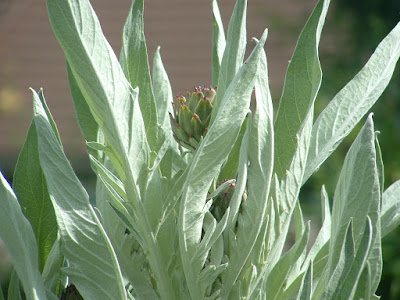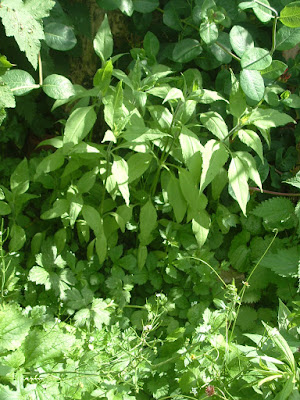We have been collecting boxes and paper feed sacks here for a couple months now, and the son and I decided we had enough to sheet mulch one bed at the allotment. A friend has promised me as many strawberry runners as I can carry, as soon as they finish fruiting--probably in July. She has a very small garden but grows a big strawberry patch; I have terrible luck with strawberries in my garden: the chickens have scratched up nearly every one I've put down over the years.
I figured the allotment will be altogther a safer place, plus there will be plenty more space and sun there. After laying down the cardboard and paper, the son and I brought back boxfuls of woodchips from the communal waste area to cover it all up. It looks much tidier than my usual sheet mulch--in fact, the potatoes, pumpkins and squashes are all growing through holes in bare cardboard from last winter's sheet mulch; I ran out of organic material to put on top. Yes that looks disreputable, but it's not weedy (unlike the rest of the plot).
I'm now collecting boxes from my work and will continue to add to the sheet mulch--hopefully no one else takes all the wood chips before I'm finished.
We've been eating the yellow mange tout and the broad beans; some of the broad beans have been affected by blackfly: a problem I don't really have in my own garden as the sparrows take care of them. I'll be waiting for the regular peas to fully mature on the vines before I pick them: they're tall and lush and flowering all over.
I also picked three finger sized carrots for a salad last week, and a lovely big purple turnip for last Sunday's roast dinner; the carrots are sparse and nearly smothered with weeds, and that was the one and only turnip--it grew in the hot bed and I think the slugs ate its compatriots.
Everything else is in various states of growth: climbing beans (we put up supports from an abandoned swingset), dwarf beans; cabbages, broccoli, Brussels sprouts, kale; pumpkins, squashes, cucumbers, zuccini, achocha; shallots, leeks, spring onions; (a few) carrots and beets, lettuce.
And of course the thistles, nettles, grass, and other weeds are very vigorous and happy. I've been hoeing and hand weeding a little every day, but don't seem to have made much of a dent. The three chickens in their tractor are also doing their part, but also not making much of a dent.









